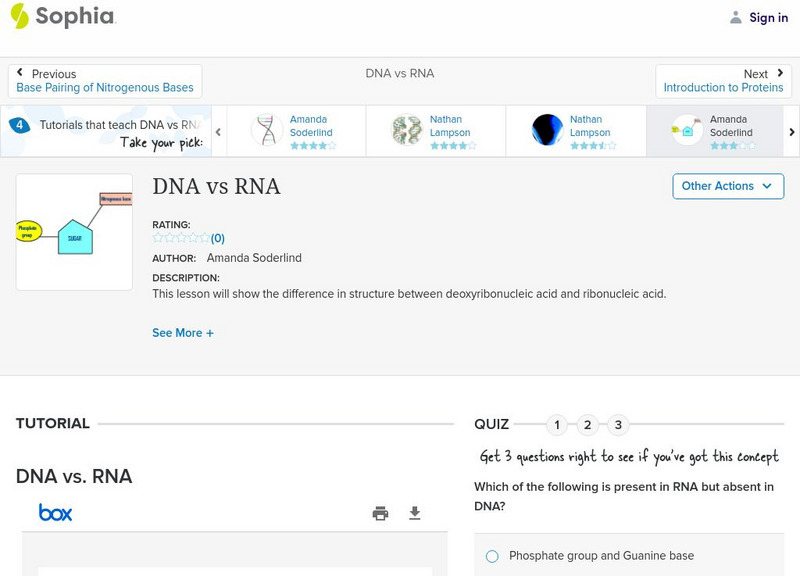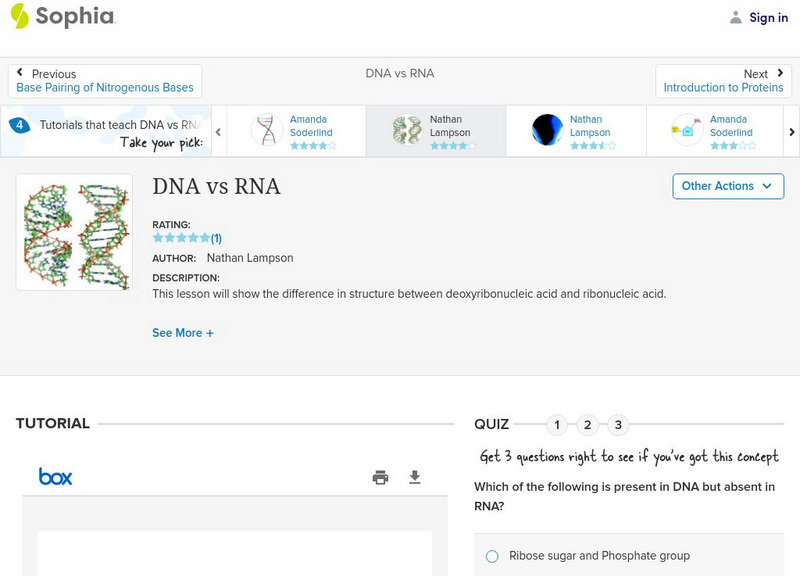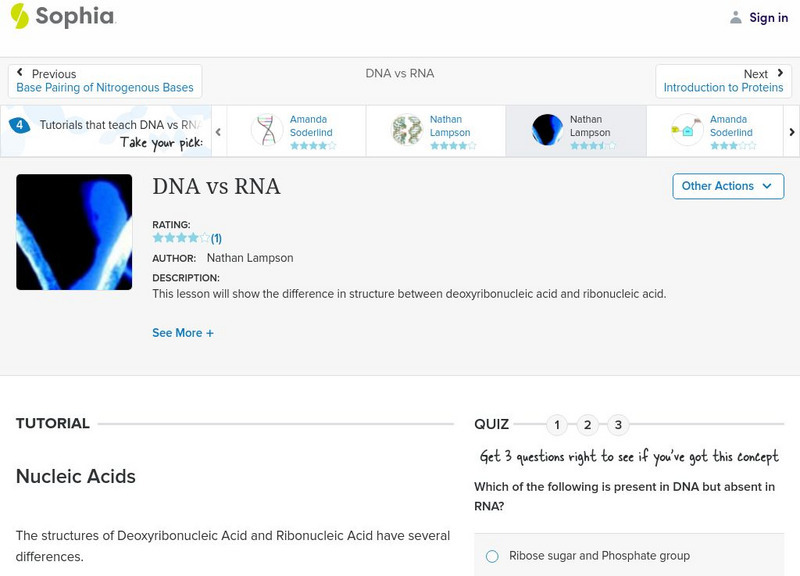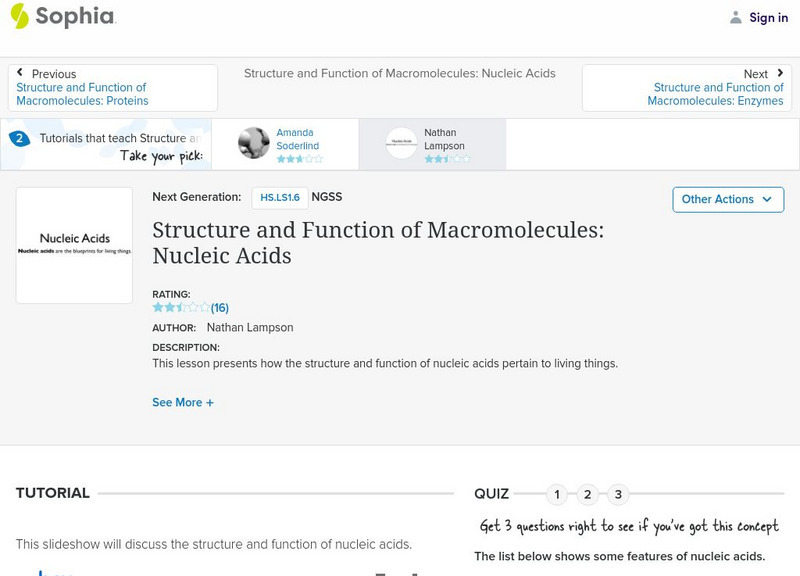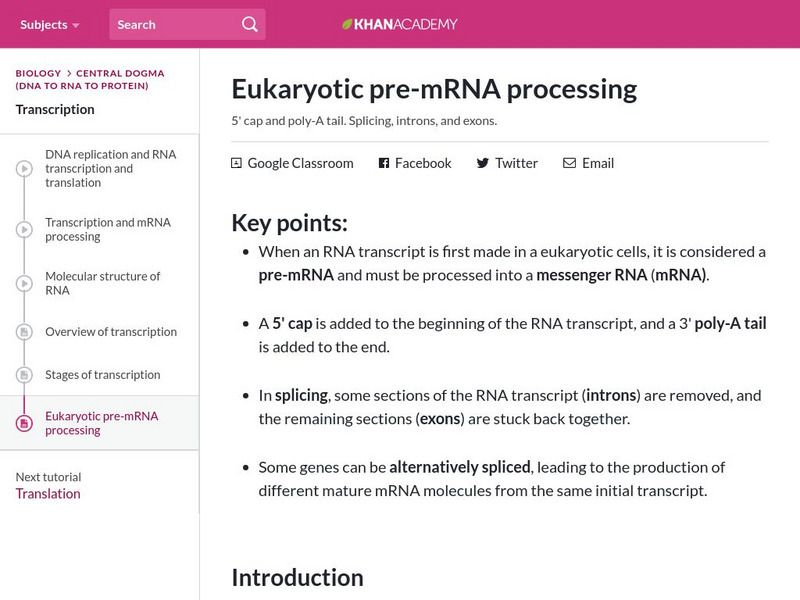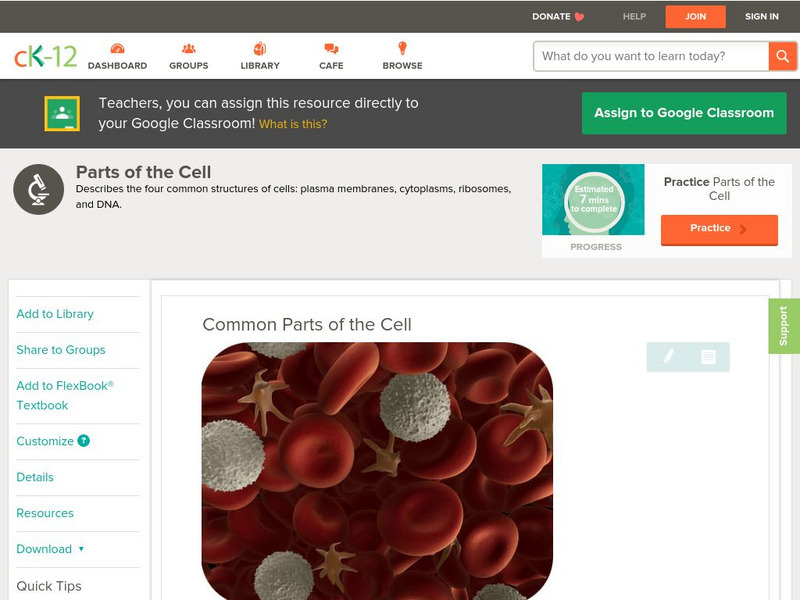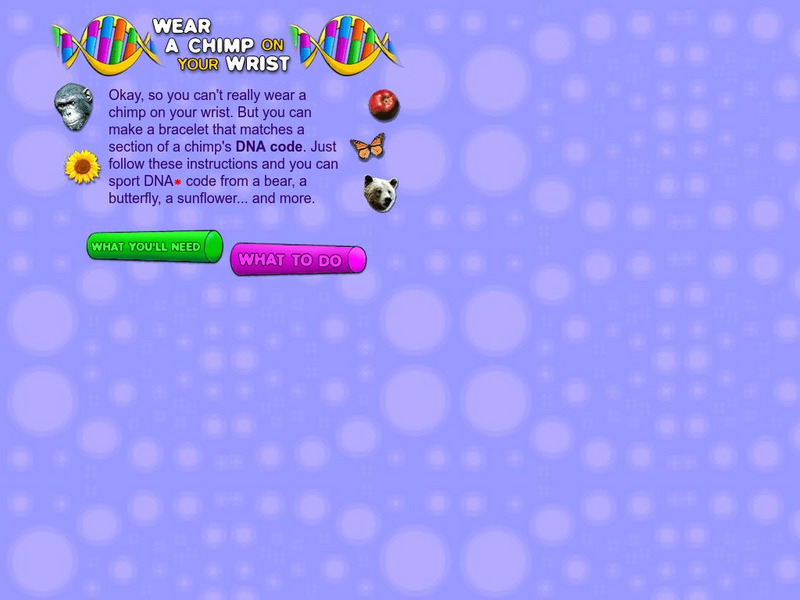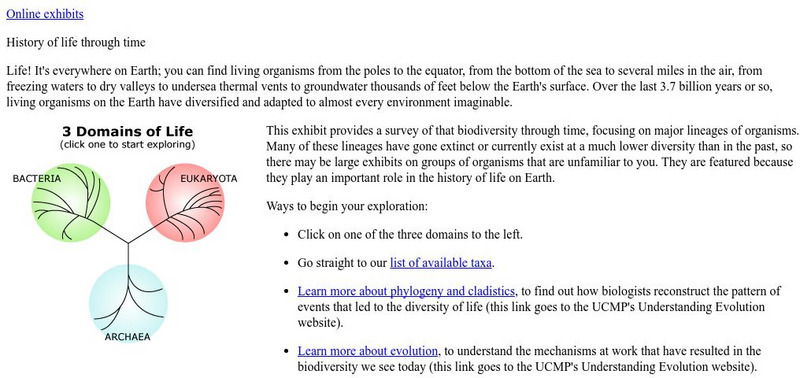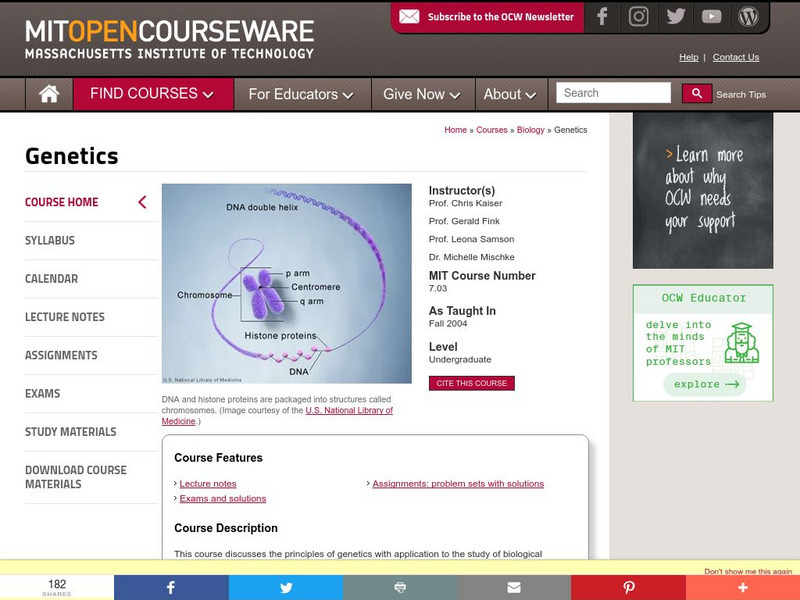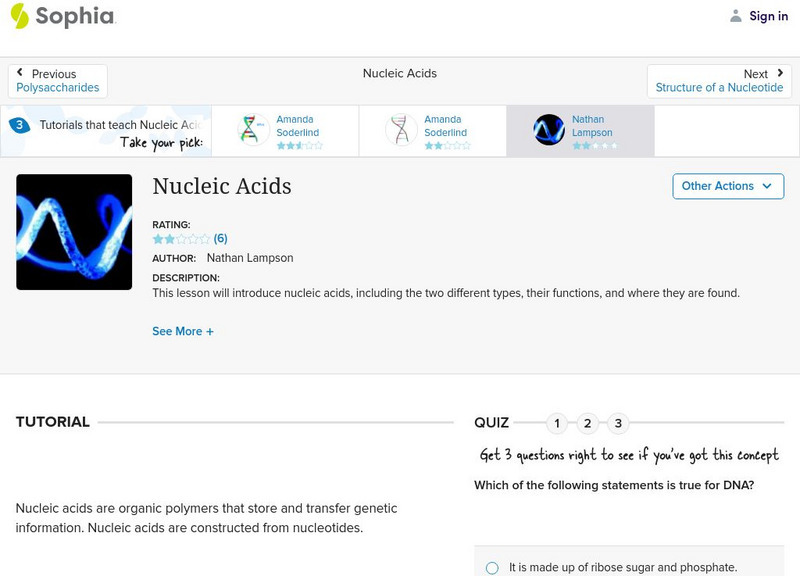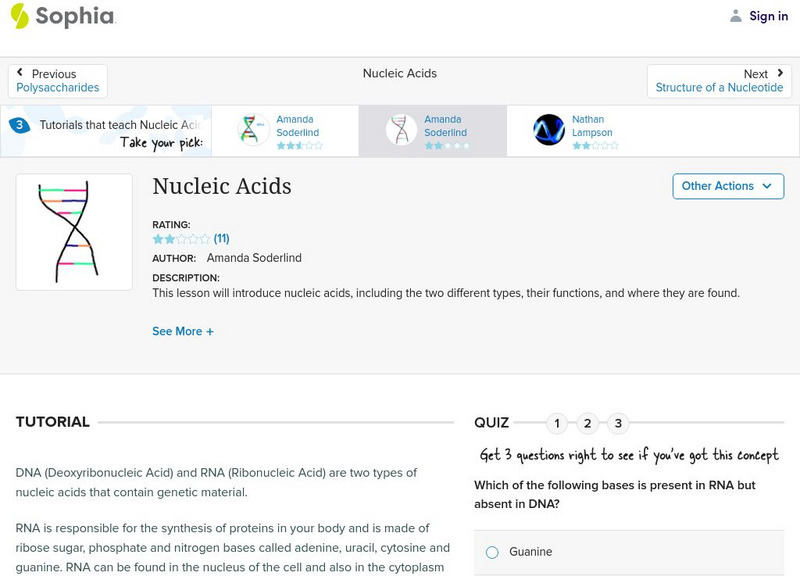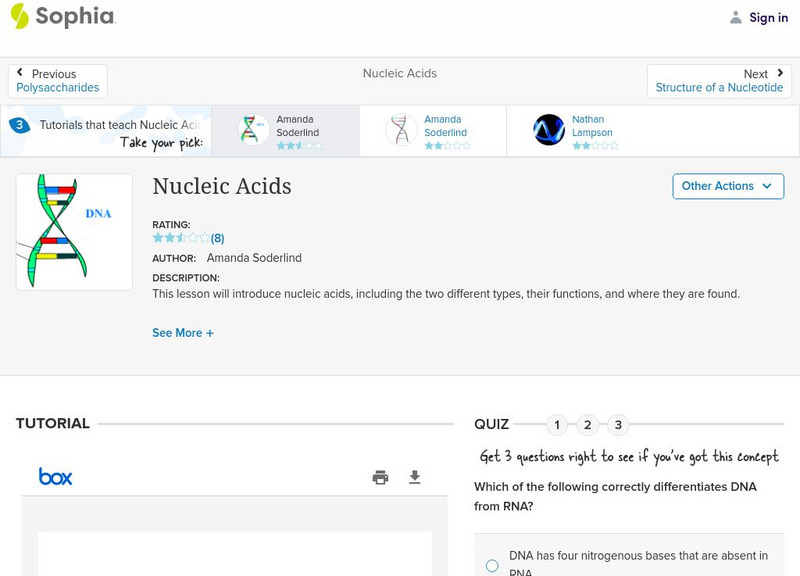Hi, what do you want to do?
National Health Museum
Nhm: Amino Acid Sequences Show Evolution
This lesson plan focuses on differences in the amino acid sequence of hemoglobin and myoglobin proteins. They use the number of differences to create a phylogenetic tree.
OpenStax
Open Stax: Lydia E. Kavraki: Protein Folding
This module introduces students to the problem of Protein Folding, its importance, and current computational methods used to attack its complexity.
Famous Scientists
Famous Scientists: Francis Crick
Discover Francis Crick, British molecular biologist, physicist, and neuroscientist who jointly won a Nobel Prize for his discoveries concerning the molecular structure of nucleic acids.
Other
Sequence Manipulation Suite: Random Protein Sequence
Random Protein Sequence generates a random sequence of the length specified by the user. Random sequences can be used to evaluate the significance of sequence analysis results.
Sophia Learning
Sophia: Dna vs Rna: Lesson 3
This lesson will show the difference in structure between deoxyribonucleic acid and ribonucleic acid. It is 3 of 4 in the series titled "DNA vs RNA."
Sophia Learning
Sophia: Dna vs Rna: Lesson 4
This lesson will show the difference in structure between deoxyribonucleic acid and ribonucleic acid. It is 4 of 4 in the series titled "DNA vs RNA."
Sophia Learning
Sophia: Dna vs Rna: Lesson 1
This lesson will show the difference in structure between deoxyribonucleic acid and ribonucleic acid. It is 1 of 4 in the series titled "DNA vs RNA."
Sophia Learning
Sophia: Structure and Function of Macromolecules: Nucleic Acids: Lesson 1
This lesson presents how the structure and function of nucleic acids pertain to living things. It is 1 of 2 in the series titled "Structure and Function of Macromolecules: Nucleic Acids."
Khan Academy
Khan Academy: Eukaryotic Pre M Rna Processing
Learn about the role of the chemical groups on the ends of the pre-mRNA called the 5' cap and poly-A tail. Also learn about splicing, introns, and exons.
University of Arizona
University of Arizona/biochemistry
Tutorial provides an overview of the structural features of carbohydrates, lipids, proteins, and nucleic acids.
CK-12 Foundation
Ck 12: Biology: Common Parts of the Cell
[Free Registration/Login may be required to access all resource tools.] Describes four parts all cells have in common.
CK-12 Foundation
Ck 12: Nucleic Acids
[Free Registration/Login may be required to access all resource tools.] Online activity covers the structure and function of nucleic acids. Students will learn about nucleotides, the different types of nitrogenous bases, and the...
American Museum of Natural History
American Museum of Natural History: O Logy: Stuff to Do: Wear a Chimp
Illustrated instructions for a constructing bracelet from a section of the DNA code for a chimp, a sunflower, a grizzly, the human heart, or any one of six other plants or animals.
PBS
Pbs Teachers: Scientific American: Never Say Die: Wisdom of the Worms
Explore scientific research in gene mapping, and discover the way genes regulate aging in people. View actual DNA after isolating it from onion cells.
Ducksters
Ducksters: Biography for Kids: Scientist: James Watson and Francis Crick
Students learn about James Watson and Francis Crick's biography on this website. Understand how these scientists discovered the structure of DNA called the double helix. They were molecular biologists.
University of California
Ucmp: The Biosphere: Life on Earth
Learn about different forms of life that coexist with us on Earth. This Berkeley article provides links to brief write-ups on the three domains of living organisms: Eukaryota, Bacteria, and Archaea.
Massachusetts Institute of Technology
Mit: Open Course Ware: Courses: Biology: Genetics
College-level course focusing on the principles of genetics. Course topics include structure and function of genes, chromosomes and genomes, biological variation, population genetics, use of genetic methods to analyze protein function,...
BiologyWise
Biology Wise: Start Codon
A start codon is a nucleotide triplet in a genetic sequence that occurs at the start of a protein's synthesis. Read about how this works and how a mutation can sometimes occur.
Sophia Learning
Sophia: Nucleic Acids: Lesson 2
This lesson will introduce nucleic acids, including the two different types, their functions, and where they are found. It is 2 of 9 in the series titled "Nucleic Acids."
Sophia Learning
Sophia: Nucleic Acids: Lesson 6
This lesson will introduce nucleic acids, including the two different types, their functions, and where they are found. It is 6 of 9 in the series titled "Nucleic Acids."
Sophia Learning
Sophia: Nucleic Acids: Lesson 7
This lesson will introduce nucleic acids, including the two different types, their functions, and where they are found. It is 7 of 9 in the series titled "Nucleic Acids."
BiologyWise
Biology Wise: What Is a Stop Codon?
A stop codon is a nucleotide triplet in messenger RNA that signals the end of a protein during the translation process. Read about how this works, the different types of stop codons, and how a mutation can sometimes occur.
New York University
Model of the Four Nucleotide Bases in Rna
The 3-D model of Cytosine (C), Uracil (U), Adenine (A), and Guanine (G), the four nucleotide bases in RNA. Requires the CHIME plug-in to view the models, or they can be viewed statically in .gif format








